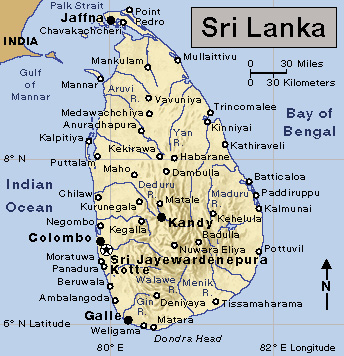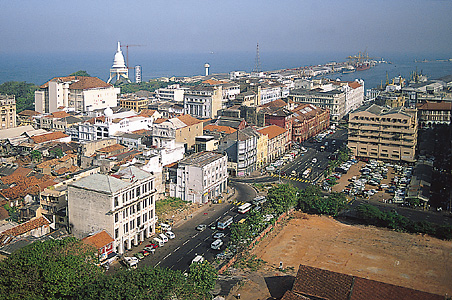Colombo << kuh LUHM boh >> (pop. 561,314) is the largest city of Sri Lanka and the country’s commercial center. A major seaport, Colombo lies on Sri Lanka’s west coast. Most of the island’s shipping passes through its harbor. Colombo is the center of Sri Lanka’s tea, coconut, and cotton trade.

Colombo is an old city, founded before the mid-1300’s. Scholars believe the city was originally known as Kolamba, a native term meaning both port and leafy mango tree. The name Colombo is the European version of this term. The Portuguese, who came in 1505, were the first Europeans to control Colombo. The Dutch occupied the city from 1656 to 1796 and erected a number of buildings that still stand. Perhaps the most impressive is the Wolfendhal Church, built in 1749. Colombo is also the home of the University of Colombo. According to tradition, Buddha visited the temple of Kalaniya just outside Colombo. Commonwealth of Nations leaders set up the Colombo Plan in the city in 1950. Colombo became Sri Lanka’s capital when the country gained its independence from the United Kingdom in 1948. The capital moved to Sri Jayewardenepura Kotte in 1982.

Colombo’s role as an international trade center increased in the late 1900’s, when a new container ship facility was completed. In the 2010’s, workers completed the first stage of the Port City project, reclaiming hundreds of acres of land from the Indian Ocean to construct a new financial district. Port City, funded largely by a Chinese government-owned engineering firm, lies in a special economic zone with regulations and tax rates separate from the rest of Sri Lanka.
See also Sri Lanka.
